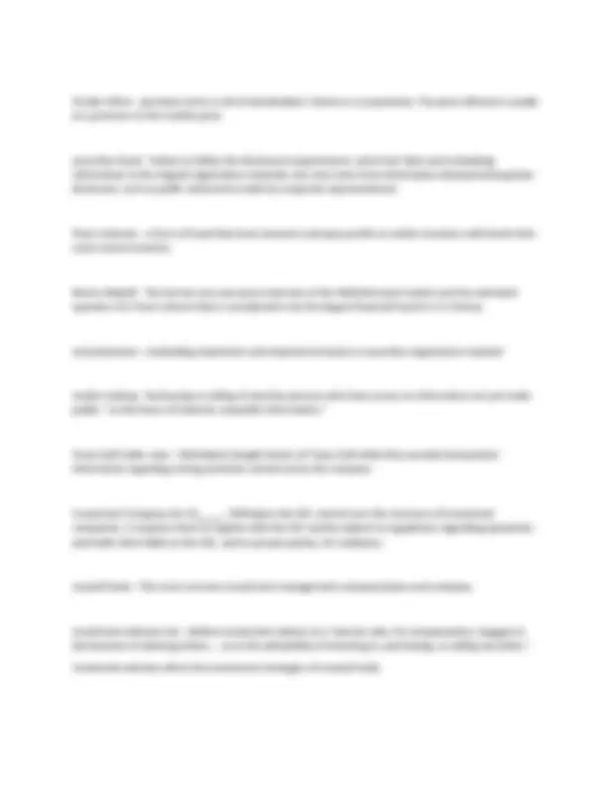




Study with the several resources on Docsity

Earn points by helping other students or get them with a premium plan


Prepare for your exams
Study with the several resources on Docsity

Earn points to download
Earn points by helping other students or get them with a premium plan
Community
Ask the community for help and clear up your study doubts
Discover the best universities in your country according to Docsity users
Free resources
Download our free guides on studying techniques, anxiety management strategies, and thesis advice from Docsity tutors
A comprehensive review of chapter 18 of blaw 3310, focusing on corporate finance and securities law. It covers key concepts such as equity and debt financing, the role of the securities and exchange commission (sec), and the howey test for determining securities. The review also includes exemptions from registration, securities fraud, insider trading, and regulations related to investment companies and advisers. It is useful for understanding the fundamentals of securities law and corporate finance. Useful for university students.
Typology: Exams
1 / 4

This page cannot be seen from the preview
Don't miss anything!



Corporate finance - the business function of obtaining funds for a company and managing them to accomplish the company's objectives blue sky laws - State laws that regulate the offering and sale of securities for the protection of the public. equity financing - Raising funds through the sale of company stock. a purchaser of shares of stock gains an ownership interest in the corporation. debt financing - obtained by borrowing money from large lenders, such as banks and insurance companies securities - stocks and bonds Securities and Exchange Commission (SEC) - the agency charged with enforcing and administering federal securities laws. An independent agency that has five members appointed by the president for five-year terms. Howey test - a test to determine when an investment is a security for the purposes of federal regulation. Howey test elements: - An investment is classified as a security for purpose of federal regulation if it contains four basic elements:
registration statement for a new security offering requires: - prospectus and detailed information required by the SEC. prospectus - (called Schedule A) condenses the longer registration statement provided to the SEC and helps investors evaluate a security. SEC review and approval - The SEC does not rule on the merit of an offering; that is, it does not give any opinion about the likelihood of success of a proposed business. Registration comes into effect 20 days after it is filed. exemptions from registration - - private placement
churning - occurs when a broker who has control of a client's account buys and sells an excessive amount of stock to make money from the commissions earned on transactions. scalping - when a professional buys stock for personal benefit, then urges investors to buy the stock so that the price rises to the benefit of the professional. What is a stock option plan? - plan that gives employees the right to purchase a fixed number of shares of company stock at a specified price for a limited period of time What is strike price? - a fixed price at which the owner of the option can buy, or sell, the underlying security or commodity. How to compute profits on exercise of stock options? - subtract your basis in the stock from the strike price of the option When was Securities Act enacted and why? - 1933; regulates the public offerings of securities when they are first sold. The Act requires that investors be given material information about new securities to try to prevent misrepresentation in the sale of securities.